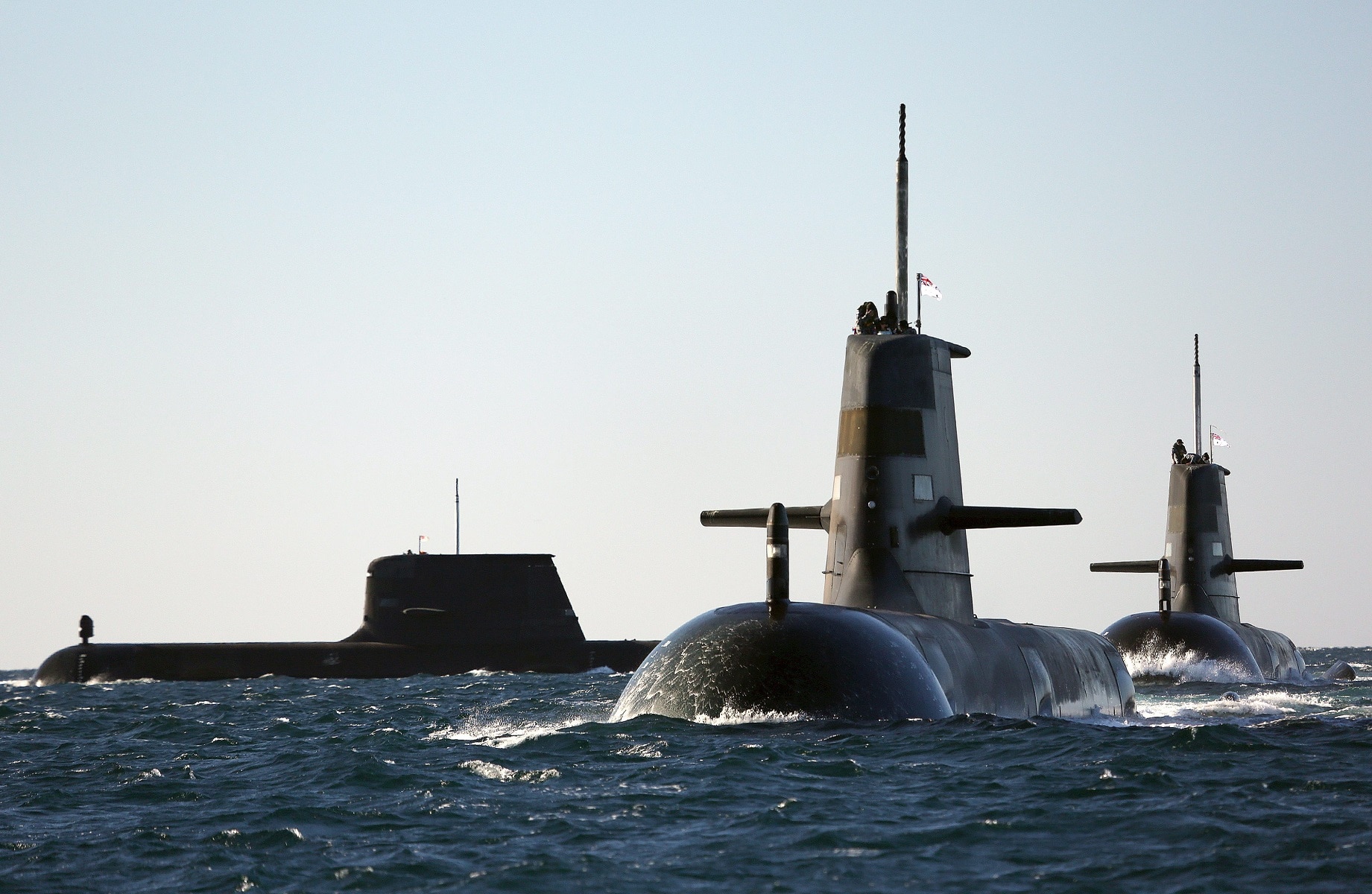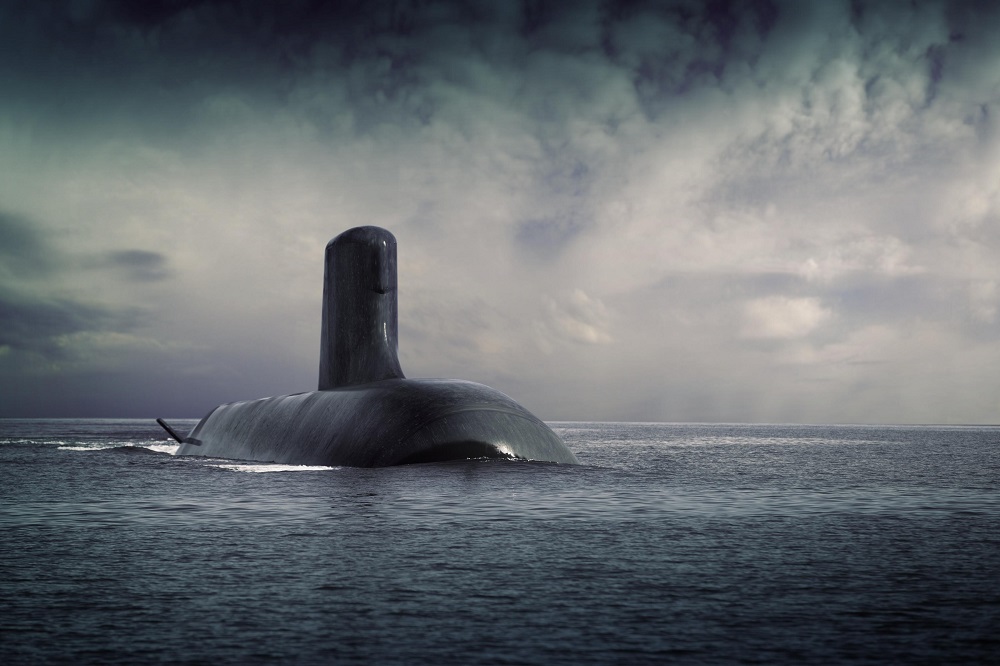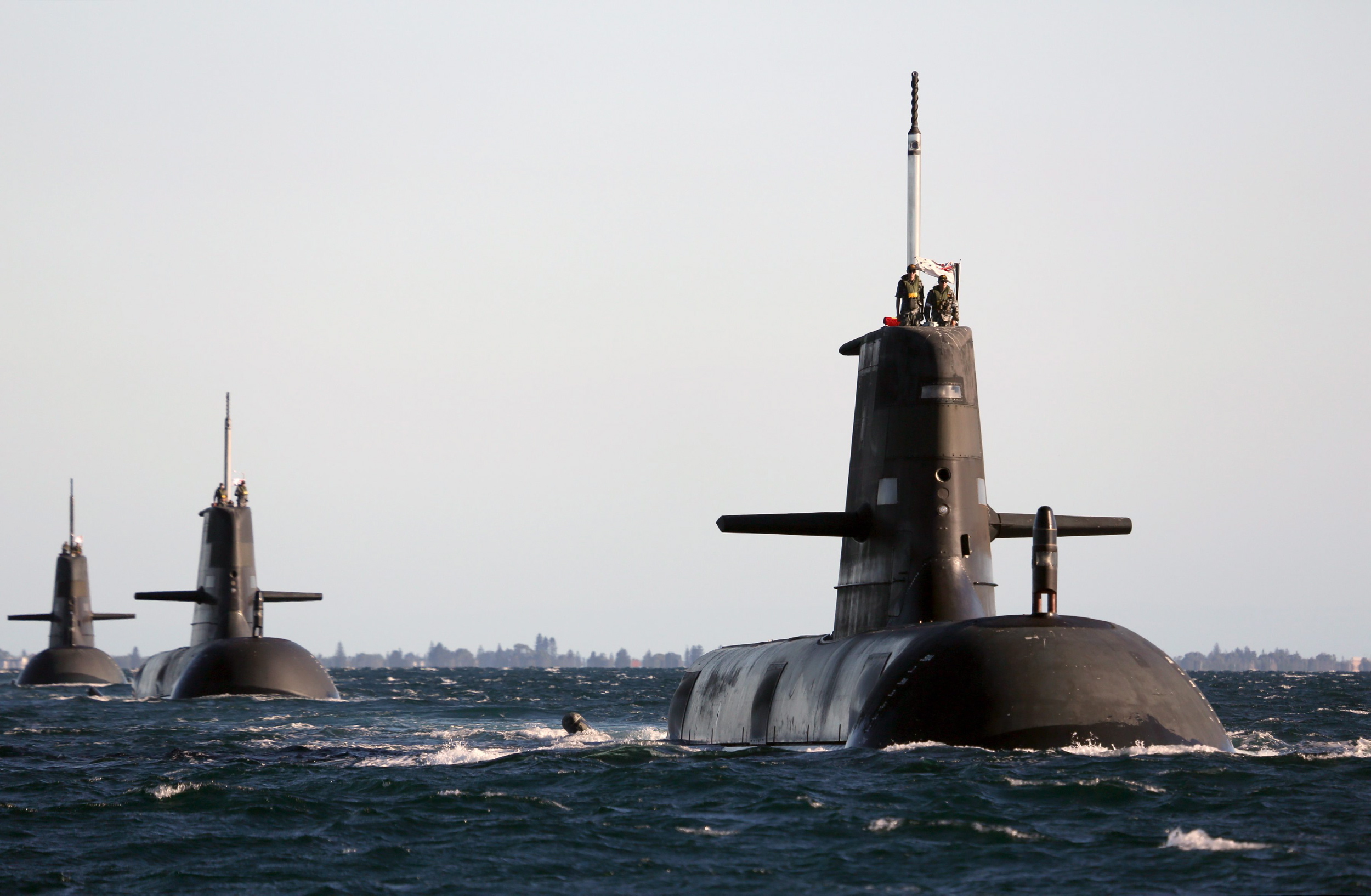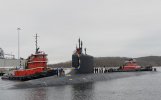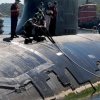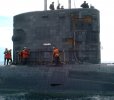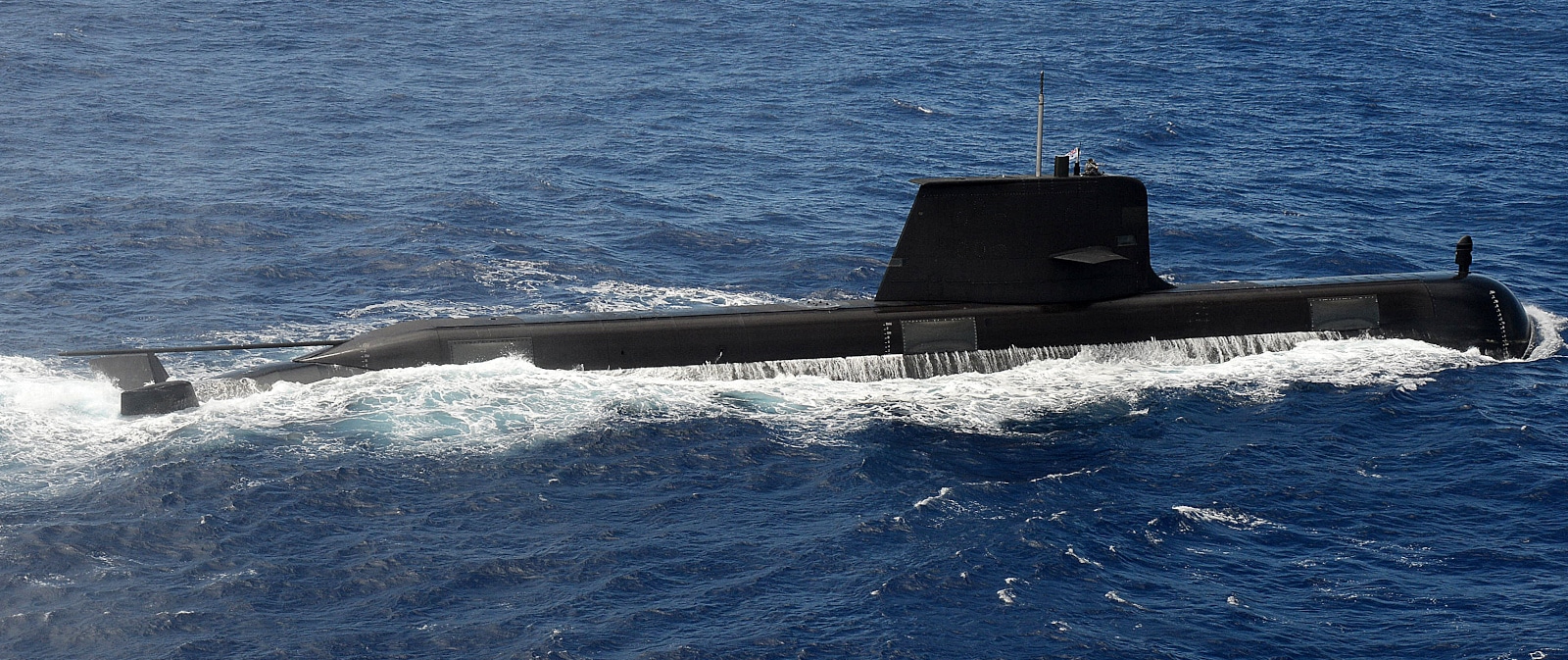Lähes kaikissa sukellusveneissä on painerungon ulkopuolella erilaisia laitteita ja ainakin lähes kaikissa länsimaisissa veneissä pinnalla ollessaan veden yläpuoliset osat eivät taida olla osa painerunkoa.
Kysymys ei ollut niinkään mistään runkoon kiinnittyvistä normaaleista rakenteista vaan siitä että rungon päälle rakennetaan ulkokuori, joka ei ole lieriö. Kaksoisrunko- nimi johtaa harhaan tietysti siinä että perinteisestihän sillä on tarkoitettu painerungon rakennetta, jota on suosittu erityisesti Venäjällä. Lännessä taas on keskitytty pääasiassa yksipainerunkoon. Syynä lienee halvempi ja yksinkertaisempi rakenne + paino.
Saksalaiset eivät turhaan suunnittele noin poikkeavaa muotoa jos siitä ei katsottaisi olevan hyötyä. On totta että s-veneet käyttävät ilman muuta passiivista sonarjärjestelmää ehdottomasti koska se mahdollistaa sukellusveneelle elintärkeän kyvyn säilyä passiivisena ja huomaamattomana. Toisaalta pinta-alukset voivat tarkentaa s-veneen sijaintia aktiivisella kaiulla helpommin, koska s-vene on yleensä havainnut pinta-aluksen jo aikaisemmin ja toisaalta s-vene pysyttelee pääasiassa piilossa niiltä.
Kuvia moderneista SSN / SSK veneistä voi verrata tuohon A212 CD havainnekuvaan. On niissä eroa.
Löysin netin syövereistä Australian sukellusveneohjelmaan liittyen ADM-julkaisun kirjoituksen vuodelta 2016. Siinä dissataan Japanin Soryu-luokkaa ja verrataan sitä Collins-luokan kykyyn.
Ilmeisesti Japanilaisten vene oli alunperin suunnitelmissa, ainakin löyhästi. USA on vaikuttanut taustalla jatkuvasti, joten siihen nähden on erikoista että Navalgroupin kanssa tehtiin aiesopimus. Tiesivätköhän Aussiet edes tarkalleen että mitä halusivat?
The submarine problem - deeper than meets the eye
7 April 2016
The Australian Government tells us that the next generation of RAN submarines will be regionally superior because they will have higher performances in stealth, sensors, range and endurance, and of course the US-origin combat system and weapons. With superior performances in these areas, the Future Submarine can outmatch any other submarine the RAN might conceivably fight, including the nearly silent nuclear attack submarines emerging from Russia and in the future, China. In the decades to come these submarines will hunt, and be hunted by, Australian submarines and it’s important to note that the RAN may not get to choose who to fight or when – they might choose us.
But what if the international partner for Australia has no better technology than we already have access to? The undeniable logic is the Future Submarine will offer performances no better than the Collins Class Submarine it replaces. An ‘Australianised’ Soryu will not be regionally superior beyond 2030. This is the critical issue.
To say it in plain English, if the Collins were to fight the Soryu today Collins would kill it every time. And there is no technology offered by Japan to suggest any evolution of the Soryu can change this situation in the future.
In lobbying Australia to accept their submarine, Japan has disclosed enough about its own capabilities in open literature to prove this. The Soryu Class, Japan’s most modern submarine, offers no improvement over Collins in any capability area – not stealth, not sonar, not range nor endurance and not combat system or weapon. Moreover, there is no objective evidence that Japan can overcome these problems with a new design. Let's examine the case for the Soryu point by point.
Signature management
A submarine can also be detected by the active sonar of an enemy. The return echo strength (or target strength) of both classes is difficult to determine as the performances of acoustics materials (tiles, paints etc) are unknown. However the large hydroplanes and control surfaces of the Soryu again provide reflexive surfaces at all observable aspects, and its double pressure at the fore and aft sections have a negative impact on return echo strength as the incoming acoustic waves can be diffracted by the structures placed between the two hulls. Here the Collins has the advantage.
The reduced length of the Soryu’s array, compromised again by avoiding the acoustic reflexion of forward section of the double hull, adversely affects performances and particularly detection at lower frequencies. A complete redesign of the forward section of the submarine into a conventional single hull and new sonar arrays is a solution – the solution already at sea on the Collins today.
To match the range and endurance of the Collins a completely new design from Japan is needed. The Soryu has a given range of 6,100 nm at 6.5 knots. Australia wants 11,000 nm at 10 knots.
Propulsion
Japan needs to remove the Soryu’s Air Independent Plant (AIP) of four Stirling engines, add seven metres to the length of the ship, completely resize the galley, accommodation and habitability spaces (Japan are the first to confess this problem and their own Navy has complained in public about on-board conditions), add more batteries, diesel fuel and at least one diesel engine and generator and redesign the ballast and trim system. Extending the hull is itself a major change and requires a complete revalidation of the design's underwater handling characteristics and weapons discharge parameters.
New major platform equipment will in turn require new main propulsion switchboards and a new power control and distribution system particularly for the new combat system network and new communications equipment.
And of course there is the AN/BYG-1 combat system and Mk-48 ADCAP torpedo. Both are at sea and proven in the Collins today and are yet to be integrated into Soryu. Australia is the lead customer again, not Japan.
Conclusion
The final footnote is addressing the perception the US favours a strategic tie-up with Australia and Japan. And of course, the strategic link between the US, Sweden and Australia, as proven in the Collins, has been discounted from the beginning of the CEP. Every day the media reports that the US Government is "backgrounding" Australian officials, journalists and political players that a Japan solution is preferred. Officially, the US says it is neutral and this is appropriate.
Consider the reverse situation: it is inconceivable that the USN would operate a submarine with inferior performances in order to accommodate an ally’s request. Equally, the ally in question would be regarded as grossly interfering in US sovereignty.
It would cause anger.
https://www.australiandefence.com.au/news/the-submarine-problem-deeper-than-meets-the-eye
Tästä jutusta herää useitakin kysymyksiä. Eli USA lobbasi alunperin Japanilaista venettä Australialle, koska siinä olisi käytetty US-teknologiaa. Menikö lobbaus niin aggressiiviseksi että Australia suuttui ja kääntyi Ranskan puoleen? Vuonna 2016 USAn pressana istui ärhäkkä ja röyhkeä bisnesmies, joten tämä ei olisi kaukaa haettua.
Toisaalta tekstin mukaan Australialle tarjottu AIP-veneen modifikaatio ei olisi vastannut uusiin vaatimuksiin, kuten 11000 merimailia, 10 solmun nopeudella. Australian vaatimukset ovat valtamerellä ja etäällä lähiliittolaisista aivan muuta kuin Itämerellä tai Pohjanmerellä saati Japaninmerellä operoivilla veneillä. Vaaditaan yhä pidempää toimintamatkaa ja aikaa jos halutaan tiedustelutietoa Kiinasta ja pyritään seuraamaan niiden kehittyneempiä veneitä.
Jos Japanin veneitä olisi pitänyt venyttää joka suunnasta ja poistaa AIP ym.ym. niin Aussieiden katseet kohdistuivat ehkä myös lopulta Navalgroupin tuotteen sijasta sellaiseen, joka tarjoaa myös huomattavan suorituskykyloikan. Pelkkä hiljaisuus ei riitä.
On myös huomattava että s-veneiden rungon suunnittelussa on otettava huomioon akustinen häive aktiivisesti ja passiivisesti. Tulee mieleen hävittäjien osalta samantyyppiset tarpeet oman radiotaajuussäteilyn, Ir-jäljen ja tutkaheijastuksen osalta. Häive on kokonaisvaltaisesti rakennettava myös sukellusveneeseen sisältä ulospäin ja päinvastoin.
